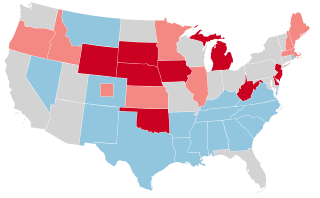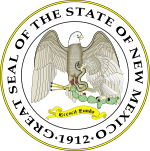
The speaker of the United States House of Representatives, commonly known as the speaker of the House, is the presiding officer of the United States House of Representatives. The office was established in 1789 by Article I, Section II, of the U.S. Constitution. By custom and House rules, the speaker is the political and parliamentary leader of the House and is simultaneously its presiding officer, de facto leader of the body's majority party, and the institution's administrative head. Speakers also perform various other administrative and procedural functions. Given these several roles and responsibilities, the speaker usually does not personally preside over debates—that duty is instead delegated to members of the House from the majority party—nor regularly participate in floor debates.

John Nance Garner III, known among his contemporaries as "Cactus Jack", was an American Democratic politician and lawyer from Texas. He served as the 39th speaker of the United States House of Representatives from 1931 to 1933 and as the 32nd vice president of the United States under Franklin D. Roosevelt from 1933 to 1941. Garner and Schuyler Colfax are the only politicians to have served as presiding officers of both chambers of the United States Congress as speaker of the House and vice president of the United States.

Joseph William Martin Jr. was an American Republican politician who served as the 44th speaker of the United States House of Representatives from 1947 to 1949 and 1953 to 1955. He represented a House district centered on his hometown of North Attleborough, Massachusetts, from 1925 to 1967 and was the leader of House Republicans from 1939 until 1959, when he was ousted from leadership after the party's disastrous losses in the 1958 elections. He was the only Republican to serve as Speaker in a sixty-four year period from 1931 to 1995. He was a "compassionate conservative" who opposed the New Deal and supported the conservative coalition of Republicans and southern Democrats.

William Brockman Bankhead was an American politician who served as the 42nd speaker of the United States House of Representatives from 1936 to 1940, representing Alabama's 10th and later 7th congressional districts as a Democrat from 1917 to 1940. Bankhead was a strong liberal and a prominent supporter of President Franklin Roosevelt's New Deal of pro-labor union legislation, thus clashing with most other Southern Democrats in Congress at the time. Bankhead described himself as proud to be a politician, by which he meant that he did not neglect matters that concerned his district or reelection. He was the father of actress Tallulah Bankhead.

John Henry Kyl was an American politician who served as a member of the United States House of Representatives, representing Iowa's 4th congressional district from 1959 to 1965 and again from 1967 to 1973. He was a member of the Republican Party.

The 1940 United States Senate elections coincided with the election of Franklin D. Roosevelt to his third term as president. The 32 seats of Class 1 were contested in regular elections, and special elections were held to fill vacancies.

The 1960 United States House of Representatives elections was an election for the United States House of Representatives on November 8, 1960, to elect members to serve in the 87th United States Congress. They coincided with the election of President John F. Kennedy and was the first house election to feature all 50 current U.S. states.

The 1940 United States House of Representatives elections were elections for the United States House of Representatives to elect members to serve in the 77th United States Congress. They were held for the most part on November 5, 1940, while Maine held theirs on September 9. They coincided with President Franklin D. Roosevelt's re-election to an unprecedented third term. His Democratic Party narrowly gained seats from the opposition Republican Party, cementing their majority. However, the election gave firm control of the US House of Representatives and Senate to the New Dealers once again, as Progressives dominated the election.

The 76th United States Congress was a meeting of the legislative branch of the United States federal government, composed of the United States Senate and the United States House of Representatives. It met in Washington, D.C., from January 3, 1939, to January 3, 1941, during the seventh and eighth years of Franklin D. Roosevelt's presidency. The apportionment of seats in the House of Representatives was based on the 1930 United States census.
The 1818–19 United States House of Representatives elections were held on various dates in various states between April 26, 1818 and August 12, 1819. Each state set its own date for its elections to the House of Representatives before the first session of the 16th United States Congress convened on December 6, 1819. They occurred during President James Monroe's first term. Also, newly admitted Alabama elected its first representatives in September 1819, increasing the size of the House to 186 seats.

The United States House of Representatives, commonly known as the lower chamber of the United States Congress, along with the United States Senate, commonly known as the upper chamber, are the two parts of the legislative branch of the federal government of the United States. Like its counterpart, the House was established by the United States Constitution and convened for its first meeting on March 4, 1789, at Federal Hall in New York City. The history of this institution begins several years prior to that date, at the dawn of the American Revolutionary War.

The House Democratic Caucus is a congressional caucus composed of all Democratic representatives in the United States House of Representatives, voting and non-voting, and is responsible for nominating and electing the Democratic Party leadership in the chamber. In its roles as a party conference, the caucus writes and enforces rules of conduct and discipline for its members, approves committee assignments, and serves as the primary forum for development of party policy and legislative priorities. It hosts weekly meetings for these purposes and to communicate the party's message to members.

Benjamin Martin Golder was a Republican member of the United States House of Representatives, representing the Commonwealth of Pennsylvania's Fourth District.
George Kremer was a member of the United States House of Representatives from Pennsylvania.

The United States House of Representatives elections in California, 1942 was an election for California's delegation to the United States House of Representatives, which occurred as part of the general election of the House of Representatives on November 3, 1942. California gained three districts as a result of the 1940 census, two of which were won by Democrats and one by Republicans. Of California's existing seats, Democrats and Republicans each swapped one district.

The United States House of Representatives elections in California, 1940 was an election for California's delegation to the United States House of Representatives, which occurred as part of the general election of the House of Representatives on November 5, 1940. Republicans gained two districts.

The 1942 United States elections were held on November 3, 1942, and elected the members of the 78th United States Congress. In Democratic President Franklin D. Roosevelt's unprecedented third mid-term election and during World War II, the Republican Party picked up seats in both chambers. Still, the Democrats retained control of Congress.

The 1940 United States Senate election in New York was held on November 5, 1940. Incumbent Democratic Senator James M. Mead, first elected in 1938 to fill vacancy caused by the death of Royal S. Copeland, was re-elected to a full term in office, defeating Republican Bruce Barton.


















